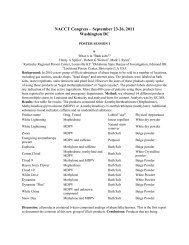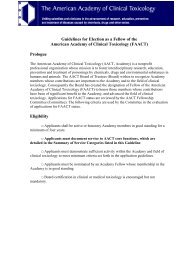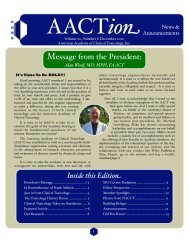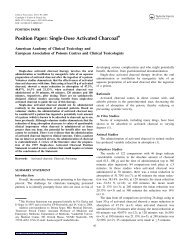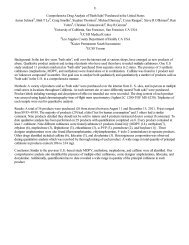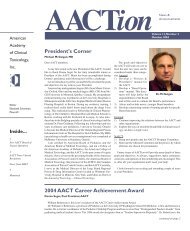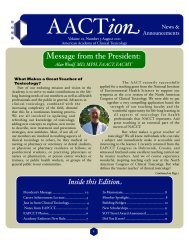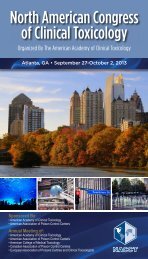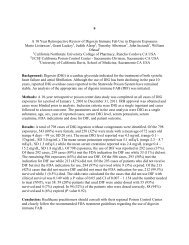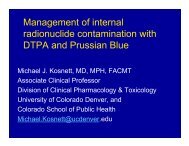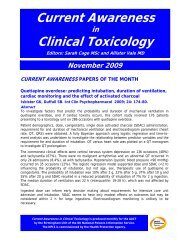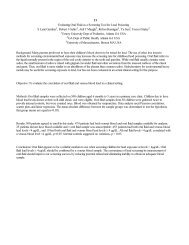Posters IV - The American Academy of Clinical Toxicology
Posters IV - The American Academy of Clinical Toxicology
Posters IV - The American Academy of Clinical Toxicology
Create successful ePaper yourself
Turn your PDF publications into a flip-book with our unique Google optimized e-Paper software.
INTRODUCTION. Teleworking has become an emerging initiative among many companies in an effort<br />
to better utilize their current workforce. By globalizing and evolving their scheduling strategy, poison<br />
center managers presuppose cost savings for their company, lowered carbon emissions, a plan <strong>of</strong> action<br />
for emergency preparedness, and improved job satisfaction among their employees. Assessing<br />
productivity <strong>of</strong> employees while teleworking as opposed to an in-<strong>of</strong>fice workday will be critical in<br />
evaluating the effectiveness <strong>of</strong> this program. Equally as important is their efficiency as compared to other<br />
colleagues with a comparable workload. BACKGROUND. In February <strong>of</strong> 2009, our center implemented<br />
10-hour work shifts for our staff <strong>of</strong> Specialists in Poison Information (SPIs). Four months later, we<br />
launched our telework initiative for 10 SPIS who met predetermined criteria. As we look to expand this<br />
initiative to a broader staff base, Key Performance Indicators (KPIs) and a corresponding standard <strong>of</strong><br />
measure have been established to assess the overall program's degree <strong>of</strong> efficiency. METHODS. Utilizing<br />
data from previously produced monthly SPI productivity reports, KPIs were established for the 21 SPIs<br />
we analyzed in this study. <strong>The</strong>se KPIs included the number <strong>of</strong> cases handled per SPI, time SPI was<br />
available to receive a call, time SPI was idle, rate <strong>of</strong> incoming calls per hour, and average wrap-up time<br />
per call. Automatic call distribution (ACD) and workload data was gathered for each KPI in three different<br />
settings. We compared seven teleworkers productivity during a telework shift and a non-telework shift to<br />
other SPIs during a comparable non- telework shift. RESULTS. Comparison between teleworkers<br />
working at home and in the <strong>of</strong>fice, and teleworkers compared to <strong>of</strong>fice-based staff, showed less than 10%<br />
variation on most KPI measures. Only availability to answer ACD calls varied significantly. Teleworking<br />
SPIs were available for a larger amount <strong>of</strong> time during their teleworking shift compared to their own shifts<br />
in-<strong>of</strong>fice and to <strong>of</strong>fice-based staff (for 10 hr shifts, 9 hr 4 min, vs. 8 hr 38 min and 8 hr 33 min<br />
respectively, p



